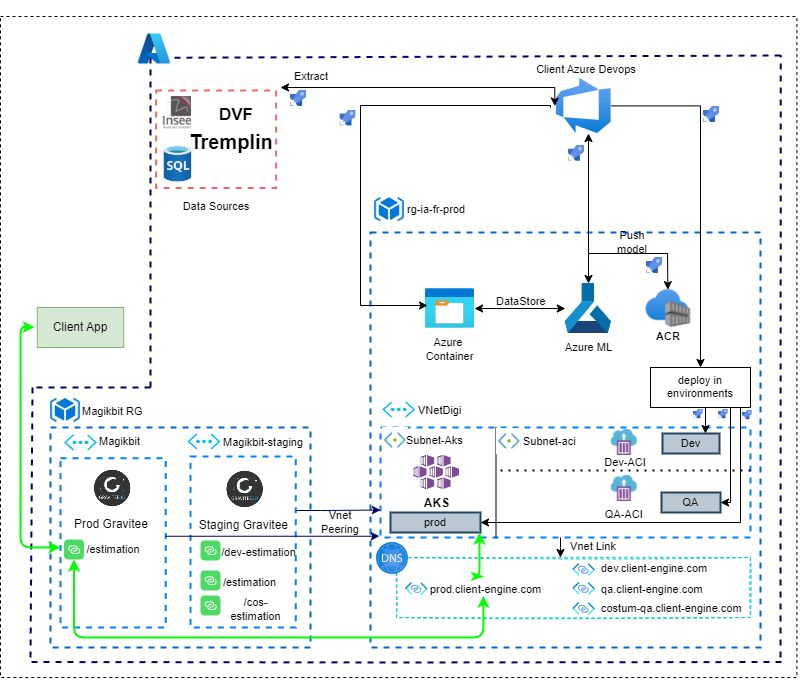
Project objectives
The main objectives of this project were :
- Price Estimation Model Migration: Migrate the Drimki real estate price estimation model from AWS to Azure.
- Implementation of CI/CD MLOps: Create a CI/CD MLOps process to automate the machine learning lifecycle.
- Maintenance in Operational Conditions (MCO): Ensure the maintenance and monitoring of the Azure platform for Digitre.
Platform and technologies used
The migration and automation were carried out using the Azure platform. The following technologies and services were essential to our solution:
- Azure Container Instance (ACI): For development and QA environments.
- Azure Container Registry (ACR): For managing container images.
- Azure Key Vault: For secure management of secrets and keys.
- Gravitee APIM: For API management.
- Azure Private DNS: For private DNS resolution.
- Azure SQL Databases: For structured data storage.
- Azure Resource Manager (ARM): For infrastructure as code (IaC).
- Azure DevOps: Including Rest, Pipelines and Boards for CI/CD.
- Azure Machine Learning: For the development and deployment of machine learning models.
- Azure Kubernetes Services (AKS): For orchestrating containers.
- Azure Monitor: For monitoring and alerts, including Azure Insights and Azure Log Analytics Workspace.
Challenges and solutions
- Environment interoperability: Ensuring compatibility between the AWS and Azure environments required careful planning and rigorous testing. Migration tools and custom scripts were used to automate and verify the migration.
- Data security: Secure data management during migration and post-deployment was a major challenge. Azure Key Vault and strict security policies were implemented to protect sensitive data.
Conclusion
This project demonstrated how a well-planned migration and the implementation of CI/CD MLOps can transform the machine learning lifecycle and optimise operations. By migrating the property pricing model from Drimki to Azure and automating the CI/CD processes, we were able to improve the efficiency, security and scalability of the platform.
Implementing this solution enabled the company to benefit from the advantages of the Azure cloud, while maintaining operational continuity and ensuring effective management of machine learning models. This case study illustrates how a structured, technological approach can facilitate the transition to modern infrastructures and optimise operational processes.
© All rights Resereved To GYCLOUDATA